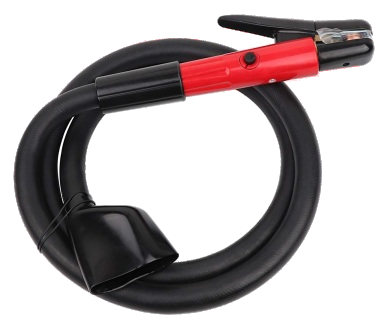
Maximum Current Rating : Up to 1000 Amps
Maximum Air Pressure: 10Bar
Cable Length: 3 METER
Item Codes: 38400575

Maximum Current Rating : Up to 1500 Amps
Maximum Air Pressure : 10Bar
Cable Length : 3 METER
Item Codes: 38400629
We offer widest range of consumable option for a variety of welding application needs.
Quality is the core of our products. We use the best raw materials and manufacturing process to achieve perfect quality.
We make our products in-house and thus provide our customers with a value for money product.
We offer Bulk discount for OEM companies and Dealers - Distributors.
A Gouging Torch is an essential tool in the world of welding and metal fabrication, especially when it comes to removing unwanted metal with speed and precision. Whether you’re cutting out damaged welds, preparing a surface for rewelding, or shaping a component, a Gouging Torch provides the control and power needed for the job. Unlike other cutting methods, such as plasma or oxy-fuel, a Gouging Torch uses an electric arc combined with a stream of compressed air to melt and blow away metal, making it highly effective for carbon arc gouging tasks.
Used widely in shipyards, repair shops, and heavy manufacturing plants, the Gouging Torch is favored for its ability to remove metal cleanly without damaging the surrounding area. It can be used on a variety of metals, including carbon steel, stainless steel, and cast iron, making it a versatile tool for fabricators and maintenance professionals. With both manual and mechanized options available, the Gouging Torch has evolved to suit a wide range of industrial needs.
In this post, we’ll explore how a Gouging Torch works, the different types available, its main applications, safety best practices, and how to choose the right one for your specific job. Whether you’re new to gouging or looking to upgrade your equipment, this guide will help you understand why a Gouging Torch is a must-have in any serious welding setup.
For a deeper technical explanation, you can also check out the Wikipedia page on air carbon arc cutting.
In arc welding, gouging refers to the process of removing metal from a workpiece using an electric arc. It is commonly used for:
Removing defective welds
Preparing joints
Removing excess metal
Creating grooves for re-welding
Most common type of gouging in arc welding.
Source: Carbon or graphite electrode + compressed air
How it works: An electric arc is struck between a carbon electrode and the workpiece. The intense heat melts the metal, and a high-velocity jet of compressed air blows the molten metal away.
Applications: Used in fabrication shops, shipyards, maintenance.
Pros: Fast, versatile, works on most metals.
Cons: Noisy, produces fumes and sparks, requires air compressor.
Source: Plasma arc (ionized gas at high temperature)
How it works: A constricted plasma jet melts the metal, and the force of the jet removes it.
Applications: Precision gouging, clean removal with less slag.
Pros: Cleaner than carbon arc, minimal contamination.
Cons: More expensive, requires specialized equipment.
Source: Oxy-acetylene or other fuel gas + oxygen
How it works: The torch heats the metal to its ignition temperature, and oxygen blows away the molten metal.
Applications: Common for gouging carbon steel, especially when electric power isn’t available.
Pros: Portable, doesn’t need electricity.
Cons: Only works on ferrous metals (not aluminum or stainless steel).
Source: Standard stick welding (Shielded Metal Arc Welding) with a gouging electrode
How it works: A special gouging electrode is used in a drag or push technique to remove metal.
Applications: Light-duty gouging tasks when other equipment isn’t available.
Pros: Cheap and accessible.
Cons: Not as efficient or clean as other methods.
Current setting (higher for deeper gouges)
Electrode size and type
Arc length
Travel speed
Angle of the electrode

APS welding is always ready to help you. For Sales Enquiries:Contact: +91 9601 444 111For booking service call:Contact: +91 9601 444 222
We design and manufacture all our products and thus we know the best about our products.
We are able to offer international technology and service at optimum prices.
Our team is regularly trained for updates in service techniques and also are constantly update on knowledge and skill.
We ensure you professionally managed sales and after sales support.
Office & Manufacturing Facility:
Survey No 172/1, Paikee 2, OLD GIDC Gundlav, Valsad, Valsad District, GUJARAT – 396035. INDIA.